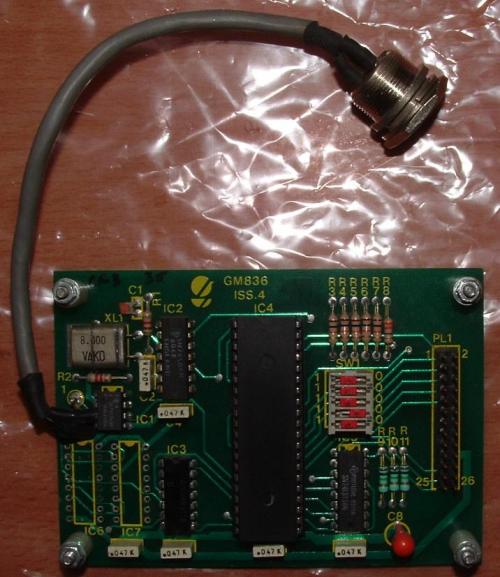
Ah, early anti-piracy at work as Gemini rubbed the numbers off the serial chip that they used for their network adapter! It’s almost certainly a standard UART as the baud rate is fixed at 250KBaud. I am still looking for more information about this card.
The GM836 first appeared in the Gemini catalogue in Autumn 1982. It was for use with the GM811 amd GM813 CPU boards and connected to the PIO port via a short ribbon cable.
Multinet was a CP/M “compatible” networking system, allowing multiple machines to work with a common file server. There were two versions released, Multinet 1 and (you’ve guessed it!) Multinet 2. Multinet 1 was available for about two years. Multinet 2 had even better CP/M compatibility and more facilities. This was a way of sharing a single “Winchester” among several users at the lowest possible cost. Note that the idea was to share disk space, not necessarily to share files.
There were two software options when ordering the GM836:
- GM836 UPG allowed a system with a Winchester drive to be converted into a file server, a floppy-based or Winchester based system to be converted into a SuperStation or a diskless system converted into a workstation.
- GM836 OEM was supplied with basic file transfer software, allowing the machine to send & receive blocks of data to and from other machines on the network. This was generally for control applications.
It was also available without software.
Basically, it worked in a similar manner to RP/M (mentioned elsewhere) in that programs would “think” that they were running under CP/M yet in reality their storage was elsewhere on the network. Not all programs will handle this, but Multinet 2 seems to have done rather well.
The network card connected to the PIO socket of the processor card. The network wiring itself was single twisted-pair using a variant of RS422 transmission. Maximum length was 600m (2000 feet). A 5-way DIL switch on the card sets the station’s address from zero to 31. Data was sent in variable length packets, each one with a CRC (checksum) to detect transmission errors.

A Multinet network would consist of a single file server with a Winchester drive and up to 31 user stations. Each station would appear to the user as a normal CP/M system with characteristics similar to that of the server. Each station would see its own virtual “Winchester” and a second read-only drive. Data transfer rate was 250k baud. Of course, as load on the server increased network response would slow down, but with up to about 10 users there was no real reduction in speed over a normal stand-alone system.
Additional components on the Multinet system were:
- GM679 – Wall mounting junction box
- GM697 – 3-pin socket
- GM680 – 3-pin plug
